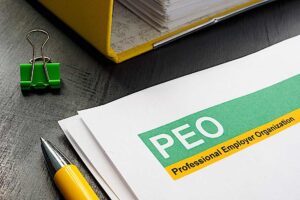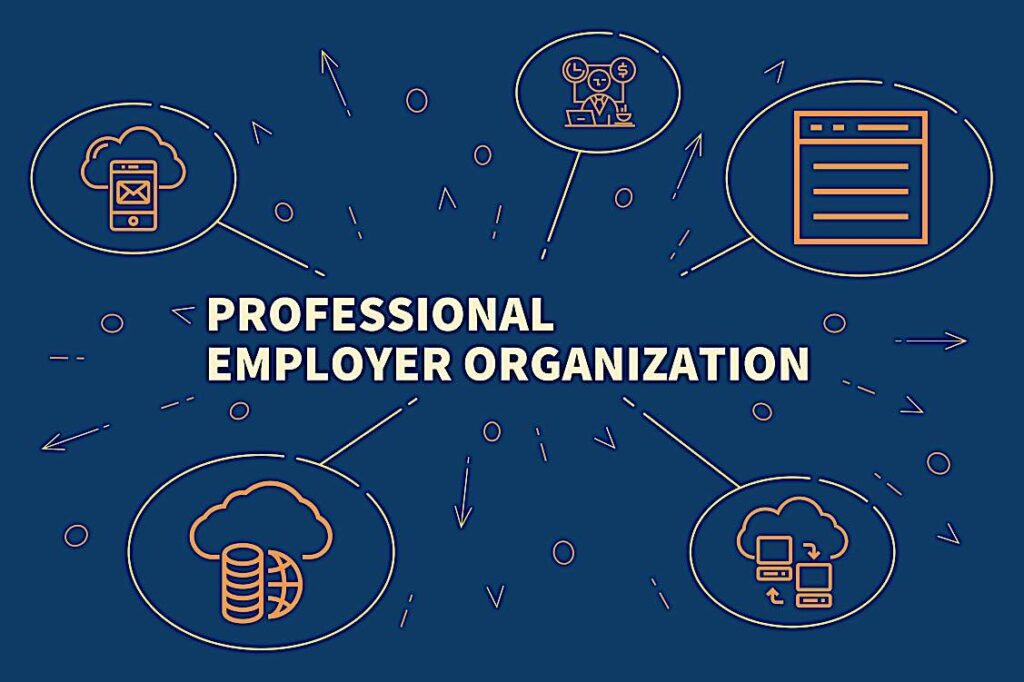
PEO or EOR: Which is Right for Your Business Plans in Canada?
The complex world of human resources can be daunting for businesses operating in Canada, especially when it comes to outsourcing HR functions. Two main models often considered by businesses are the Professional Employer Organization (PEO) and the Employer of Record (EOR).
In this feature, we map out a detailed comparison of these two models, provides insight into their features, pros and cons, and goes over some of the essential questions to ask before deciding which model is right for your business in Canada.

PEO (Professional Employer Organization)
In Canada, a PEO is a service provider that takes on various HR functions, such as payroll, benefits administration, and compliance with employment laws and regulations, while the client company retains control over the day-to-day management of their employees. The PEO enters into a co-employment relationship with the client company, which means that both the PEO and the client company share employer responsibilities.
EOR (Employer of Record)
An EOR is a service provider that becomes the legal employer of the client company’s employees. The EOR handles HR functions, including payroll, benefits administration, and compliance with employment laws and regulations. Unlike a PEO, the EOR takes full responsibility for the employees, and the client company is no longer considered their employer.
- Do you have questions about the differences between PEO and EOR — and which is better for your needs? Ask the experts at Pivotal HR Solutions>>
PEO vs EOR: Feature-by-Feature Comparison
In this section, we will delve into a detailed comparison of PEO and EOR to help you better understand their key differences and similarities. By analyzing the distinct features of each model, you can gain valuable insights into which option might be the best fit for your business’s needs and objectives.

Employment Relationship
PEO: In a co-employment relationship, the PEO and the client company share employer responsibilities. This model allows the client company to retain control over employee management while leveraging the PEO’s expertise in handling HR, payroll, and benefits administration tasks. The PEO typically assumes responsibility for the administrative aspects of employment, while the client company remains in charge of day-to-day operations and management of its employees.
EOR: When engaging an EOR, the service provider becomes the legal employer of the client company’s employees. The EOR assumes full responsibility for all aspects of employment, including payroll, benefits administration, and compliance with employment laws and regulations. This model is particularly useful for businesses seeking to quickly establish operations in Canada without the need to set up a local legal entity.
Payroll and Tax Administration
PEO: With a PEO, both the client company and the PEO share responsibility for payroll and tax administration. The PEO handles the processing of payroll, remittance of taxes, and filing of required tax documents. However, the client company remains jointly liable for any payroll or tax-related issues that may arise.
EOR: In an EOR arrangement, the EOR takes full responsibility for managing payroll and tax administration as the legal employer. This includes processing payroll, remitting taxes, and ensuring all tax filings are accurate and submitted on time. By engaging an EOR, the client company can offload the complexities of payroll and tax administration, mitigating the risks associated with compliance in this area.
Benefits Administration
PEO: One of the key advantages of partnering with a PEO is the ability to access a more extensive range of employee benefits due to the PEO’s size and client base. As a larger organization, PEOs can often negotiate better rates and coverage for benefits such as health insurance, retirement plans, and other employee perks. This can be particularly beneficial for small to medium-sized businesses that may not have the resources to secure competitive benefits packages independently.
EOR: While an EOR provides benefits administration, the range of benefits offered may be more limited compared to a PEO. As the legal employer, the EOR is responsible for managing employee benefits and ensuring compliance with any applicable laws and regulations. However, due to the EOR’s primary focus on employment compliance, the scope of benefits available may not be as extensive as those offered by a PEO.
Compliance
PEO: In a PEO arrangement, the client company shares responsibility for compliance with employment laws and regulations. While the PEO assists with ensuring adherence to applicable rules, the client company remains liable for any compliance-related issues. This model requires the client company to maintain a certain level of involvement and oversight to manage compliance risks effectively.
EOR: With an EOR, the service provider takes full responsibility for compliance with employment laws and regulations as the legal employer. This includes managing employee contracts, navigating complex labor laws, and ensuring adherence to local rules and customs. By engaging an EOR, the client company can offload compliance concerns and focus on its core business activities.
Employee Management
PEO: In a PEO arrangement, the client company retains control over the day-to-day management of employees, including supervising workloads, setting performance expectations, and maintaining the overall company culture. This model allows businesses to focus on their core operations while benefiting from the PEO’s expertise in HR, payroll, and compliance. The co-employment relationship ensures that employees feel connected to the client company, maintaining a strong sense of loyalty and engagement.
EOR: In an EOR arrangement, the client company may have less control over employee management, as the EOR assumes the role of the legal employer. While the client company still provides direction on work tasks and performance expectations, the EOR manages all HR-related responsibilities. This can include hiring, onboarding, and terminating employees, as well as overseeing employee benefits and ensuring compliance with employment laws and regulations.
Pros and Cons
Before deciding whether to opt for a PEO or EOR for your business operations in Canada, it is essential to weigh the pros and cons of each model. Understanding the advantages and disadvantages of both PEO and EOR will help you make an informed decision that aligns with your business’s unique needs and priorities.
PEO Pros
- Shared employer responsibilities can provide more control for the client company: The co-employment relationship between the client company and the PEO allows the business to retain control over crucial aspects of employee management, such as performance expectations and company culture.
- Access to a broader range of employee benefits due to the PEO’s size and client base: As PEOs serve multiple clients, they can offer a wider array of employee benefits packages, which can help attract and retain top talent.
- Assistance with compliance, while still allowing the client company to retain some control: PEOs can help businesses navigate the complexities of Canadian employment law, while still allowing the client company to maintain a degree of control over their operations.
PEO Cons
- The client company remains partially responsible for employment law compliance, which can be complex and time-consuming: Although PEOs provide assistance with compliance, the client company still shares responsibility, which may demand considerable time and effort.
EOR Pros
- Full responsibility for employment law compliance taken on by the EOR, reducing the client company’s risk: As the legal employer, the EOR assumes complete responsibility for complying with Canadian employment laws, which can minimize the client company’s risk exposure.
- Simplified HR management, as the EOR handles all HR functions: EORs manage all aspects of HR, including hiring, onboarding, and benefits administration, which can streamline business operations and reduce the administrative burden on the client company.
- Can be advantageous for businesses that need to quickly and compliantly expand in Canada: EORs can facilitate rapid expansion into the Canadian market by providing a compliant and efficient solution for managing HR and payroll functions.
EOR Cons
- The client company may have less control over employee management and company culture: Since the EOR is the legal employer, the client company may experience a more distant relationship with its employees, potentially impacting the company culture and employee engagement.
Questions to Ask Yourself Before Deciding
Before making a decision between a PEO and an EOR for your business operations in Canada, it’s crucial to consider several factors that can significantly impact your organization’s success. Reflecting on the following questions will help you evaluate which model aligns with your company’s objectives and requirements:
- How much control do you want to retain over employee management and company culture?
- How important is access to a broader range of employee benefits to your business?
- How quickly do you need to expand your workforce in Canada, and is establishing a legal entity a viable option?
- How comfortable are you with managing employment law compliance and the associated risks?
Conclusion
Choosing between a PEO and an EOR for your business plans in Canada requires a thorough understanding of your company’s needs and priorities. Both models have their advantages and disadvantages, and the right choice depends on the level of control you wish to maintain, the importance of accessing a wide range of employee benefits, and the speed at which you need to expand your workforce in Canada.
When making a decision, consider the complexity of Canadian employment laws and regulations, and assess whether you’re comfortable managing compliance risks. If you’re unsure which model to choose, consult with industry experts and research the various PEO and EOR service providers available in Canada to find the best fit for your business.
Do you have questions about the differences between PEO and EOR — and which is better for your needs?
Contact Pivotal


 Our HR solutions experts can recommend the right mix of HR outsourced services to make your entry into Canada easier.
Our HR solutions experts can recommend the right mix of HR outsourced services to make your entry into Canada easier.  Pivotal Employment Management Services co-hires your workforce, simplifying entry of your business in Canada.
Pivotal Employment Management Services co-hires your workforce, simplifying entry of your business in Canada. 
















Your Inbox Is Not a Productivity Tool